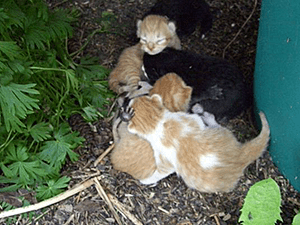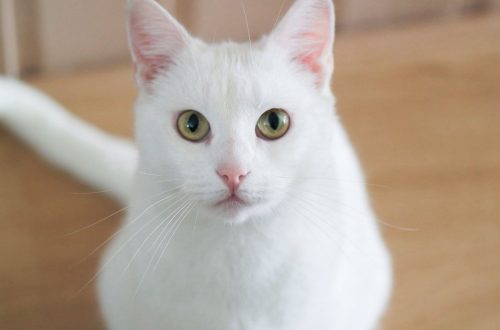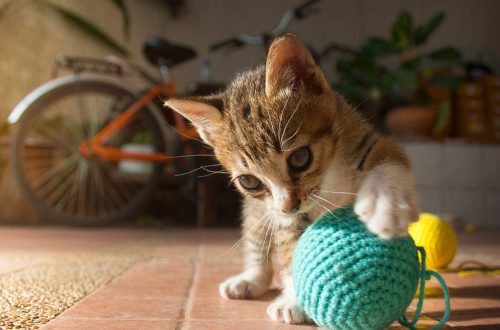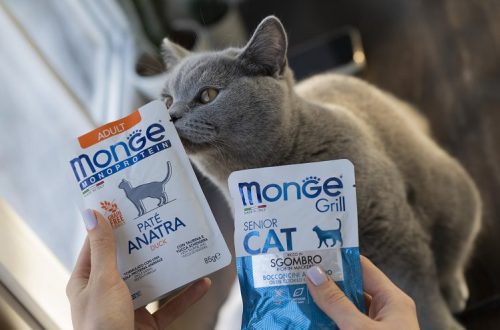
O le a le mea e fai pe a lafoai e le pusi pusi
The unexpected happened in your house: the cat left newborn kittens and refused to feed them. What happened and why can a cat stop caring for offspring? First of all, you need to try not to panic and consult with a veterinarian – he will be able to give recommendations on care.
Mataupu
How to reduce the risk of abandonment of offspring
Try to follow the basic rules:
the cat should have a warm and quiet place for childbirth and subsequent feeding of kittens;
the cat should be fed a high-nutrient diet;
no need to touch kittens in the first two weeks of their life unnecessarily;
other pets should not have access to a cat with kittens, including a cat.
If the cat nevertheless abandoned small kittens, other reasons are possible:
the cat is too young and this is her first birth;
too many kittens
after childbirth, the cat had complications, for example, mastitis;
the cat has no milk;
Contact your veterinarian for advice. Try to feed your cat a high-nutrient diet, move her house to a quiet and peaceful place – perhaps in a short time the maternal instinct will work and she will return to her cubs.
Auala e fafaga ai se pusi
Unfortunately, such measures do not always lead to the return of the mother to her offspring. You will have to take on the duties of a mother. The best option would be to give the kittens to be fed by another cat who has just given birth. If a nursing cat could not be found, you will have to try to feed the kittens at home.
How to feed a kitten without a mother? First of all, you need to purchase a special mixture for newborn kittens at the pet store. The composition of such mixtures is very similar to mother’s cat’s milk. In no case should you feed a kitten with natural cow’s milk: it is very different in composition from cat’s milk and can lead to intestinal problems.
Before feeding, the kitten needs to be stimulated: pat on the head and back, on the tummy, simulating maternal licking.
The temperature of the formula for feeding should be 36-38°C. Before you feed your kitten, put the mixture on your wrist to check the temperature. It is best to feed the kitten with a disposable syringe without a needle – this way you can control the portion size.
In the first week of life, kittens need to be fed every 2 hours. In the second week, the frequency of feeding is reduced to 8 times a day. From the third week, kittens need to be fed only during the day, but at least 6 times a day.
How much should a kitten eat? Pay attention to his behavior. A full kitten falls asleep almost immediately. If there is not enough food, the kitten will keep squeaking and poking at your hands in search of a pacifier.
After each feeding, the cat licks her offspring to stimulate digestion and help the kittens go to the toilet. You will have to wipe the belly and bottom of the kitten after each feeding with a soft cloth dipped in warm water.
Kitten self-feeding
At the age of three weeks, you can begin to introduce complementary foods into the diet of kittens. In order not to provoke digestive disorders, portions should be very small, about the size of a pea.
What can and what not to feed kittens?
Mafai:
soft and delicate food for kittens, preferably in the form of mousse.
Oe le mafai:
aano o manu mata ma i'a;
fatty, salty and fried foods;
sukalati ma suamalie;
food from your table.
How often should a kitten be fed? After the introduction of complementary foods, the frequency of feeding can be gradually reduced. In any case, please consult your veterinarian regarding nutrition and introduction of complementary foods.
Creating conditions for kittens
To raise a kitten without a cat, you will have to replace the mother not only in the process of feeding. You need to equip the kittens with a place to sleep and play, learn how to wash the kitten, give him a massage.
Se nofoaga e momoe ai. As a bed, you can use a small box. Place soft rags, baby diapers or towels there. In the first weeks of life, the temperature of the bed for kittens should be similar to the body temperature of the mother cat. The room will need to maintain a temperature of 29-32°C, then gradually reduce it to 24°C. If the kittens are cold, use a bottle of warm water or a small heater as a heating pad. The place to sleep should be clean, so wash the bedding in a timely manner, being careful not to use chemical cleaners.
Washing and massage. It is best to wash the kitten with a cotton pad soaked in warm water or a soft cloth. When washing, imitate the movements of a mother cat – run along the kitten’s fur in one direction, from top to bottom. Before and after each feeding, it is necessary to massage the kitten’s tummy to stimulate digestion and defecation.
Visits to a veterinarian
If you have any questions about caring for kittens, please contact your veterinarian. He will tell you all the nuances, talk about vaccinations and check the health of the pet. Be sure to visit the clinic if something in the behavior or appearance of the kitten confuses you. The reason for visiting a veterinarian may be discharge from the eyes or nose of a kitten, unusual pet lethargy, lack of appetite, atypical stools and injuries.
Caring for newborn kittens is a difficult and responsible task, but with due attention and patience, you will be able to feed and raise them.





